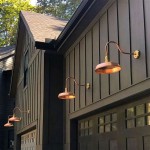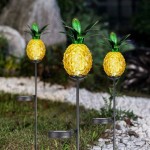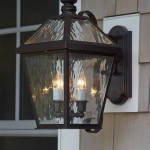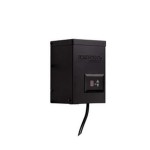How to Set a Stanley Outdoor Light Timer
Stanley outdoor light timers offer a convenient way to automate your outdoor lighting, enhancing security, saving energy, and adding a touch of ambiance to your property. Setting up these timers is a straightforward process that can be completed in a few simple steps.
1. Choose the Right Timer
The first step is selecting the appropriate timer for your needs. Stanley offers a range of outdoor light timers with different features and functionalities. Consider factors like:
- Timer Type: Choose between analog or digital timers, each with its own advantages. Analog timers are generally cheaper and simpler to operate, while digital timers provide more flexibility and advanced features.
- Plug-in or Hardwired: Decide if you need a plug-in timer that plugs directly into an outlet or a hardwired timer that connects directly to your electrical wiring.
- Number of Circuits: Determine the number of circuits the timer needs to control. A single-circuit timer manages one set of lights, while multi-circuit timers can control multiple light fixtures.
- Features: Consider features like dusk-to-dawn, photocell activation, and multiple on/off settings that align with your specific lighting requirements.
2. Install the Timer
Once you have the right timer, installation is typically a straightforward process. The specific steps may vary depending on the type of timer you have chosen:
- Plug-in Timer: Simply plug the timer into an outdoor outlet and then plug your outdoor lights into the timer's outlet.
- Hardwired Timer: This process usually requires some basic electrical knowledge. Disconnect the power to the circuit, remove the existing switch or outlet, and install the timer in its place. Connect the wires to the timer terminals according to the manufacturer's instructions. Always follow the manufacturer's guidelines to ensure safe installation.
3. Program the Timer
Programming the timer is the final step to set your lights to operate on a schedule. The steps involved in programming the timer vary depending on whether you have an analog or digital timer:
- Analog Timer: Turn the dial to match the desired on and off times. These timers typically have a 24-hour cycle, so you can set them to turn on and off at specific times every day.
- Digital Timer: Digital timers offer a more versatile programming experience. Use the buttons and display to set various on/off times, days of the week, and even specific dates. Many advanced digital timers allow you to create multiple schedules for different lighting needs.
When setting the timer, consider your specific lighting needs and preferences. For security purposes, setting the lights to come on during the evening hours and turn off in the morning can be beneficial. For aesthetic reasons, you might prefer a timed sequence of lights coming on and off throughout the night.
4. Test and Adjust
After programming the timer, test it by turning the lights on and off manually to verify that it is functioning correctly. If necessary, make any adjustments to the timer settings.
Regularly check the timer's settings and make necessary adjustments throughout the year. This is particularly important during daylight saving time transitions or if you experience changes in the length of daylight hours.
By following these simple steps, you can easily set up your Stanley outdoor light timer and automate your outdoor lighting for security, energy savings, and aesthetic appeal.

Digital Light Timer Select Twin Stanley Electrical Accessories

Stanley Lighttimer Select Trio Outdoor Darkness Sensing Timer

Instructions On How To Program A Simple Noma Stanley Outdoor Timer

Stanley 2 Outdoor Photocell Timer W38463 Blain S Farm Fleet

Programming Your Mechanical Timer

Stanley Lighttimer Select Trio Outdoor Darkness Sensing Timer

Light Timer Select Twin 2 Outdoor Sensing Countdown By Stanley At Fleet Farm

Stanley 2 Outdoor Photocell Timer W38463 Blain S Farm Fleet

Westinghouse Timers And Manuals

Stanley Outdoor Darkness Sensing Countdown Ground Stake Plug Bank 3 Select Power Center With Timer
Related Posts







